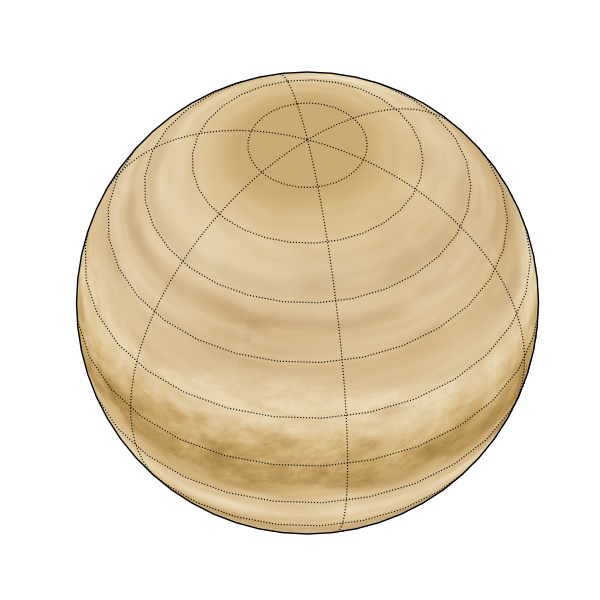Update: This is the new version using Cartopy, as basemap is EOL. Below is the original answer.
import matplotlib.pyplot as plt
import cartopy.crs as ccrs
img = plt.imread("/tmp/venuscyl4.tif")
plt.figure(figsize=(3, 3))
ax = plt.axes(projection=ccrs.Orthographic(-10, 45))
ax.gridlines(color='black', linestyle='dotted')
ax.imshow(img, origin="upper", extent=(-180, 180, -90, 90),
transform=ccrs.PlateCarree()) # Important
plt.show()
![Venus map using Cartopy]()
Thanks to Raphael Roth answer I finally found what I was looking for: the basemap method warpimage.
Here is a very minimal example. Using this cylindrical map of Venus, and based on the simple example of the cookbook:
from mpl_toolkits.basemap import Basemap
import matplotlib.pyplot as plt
import numpy as np
# set up orthographic map projection with
# perspective of satellite looking down at 50N, 100W.
# use low resolution coastlines.
# don't plot features that are smaller than 1000 square km.
bmap = Basemap(projection='ortho', lat_0 = 50, lon_0 = -100,
resolution = 'l', area_thresh = 1000.)
# plot surface
bmap.warpimage(image='venuscyl4.jpg')
# draw the edge of the map projection region (the projection limb)
bmap.drawmapboundary()
# draw lat/lon grid lines every 30 degrees.
bmap.drawmeridians(np.arange(0, 360, 30))
bmap.drawparallels(np.arange(-90, 90, 30))
plt.show()
produces the following output:
![Venus sphere map]()



bluemarblefunction callswarpimage: github.com/matplotlib/basemap/blob/master/lib/mpl_toolkits/… which might be exactly what I want. I'll try this later, thanks. – Felsite